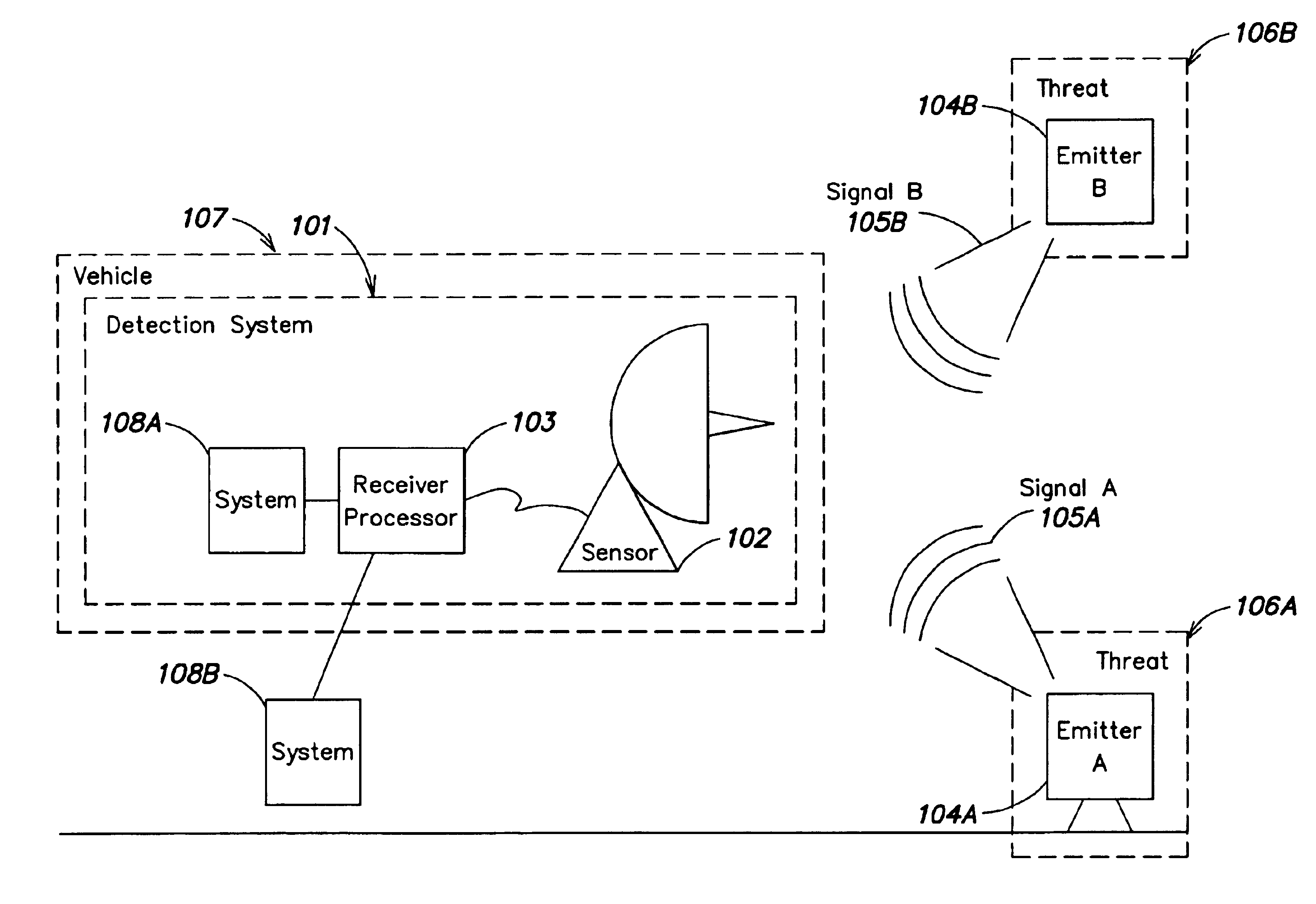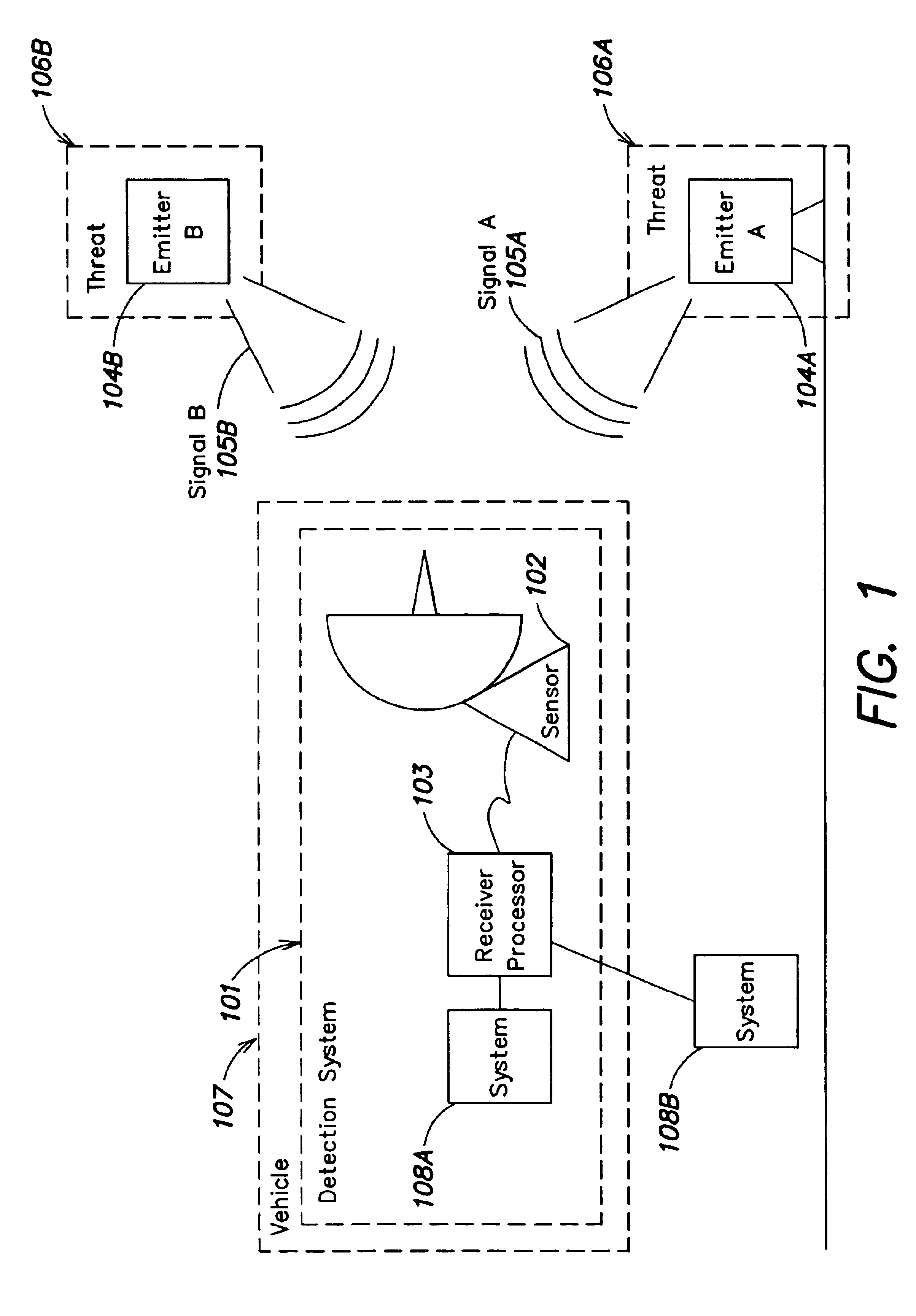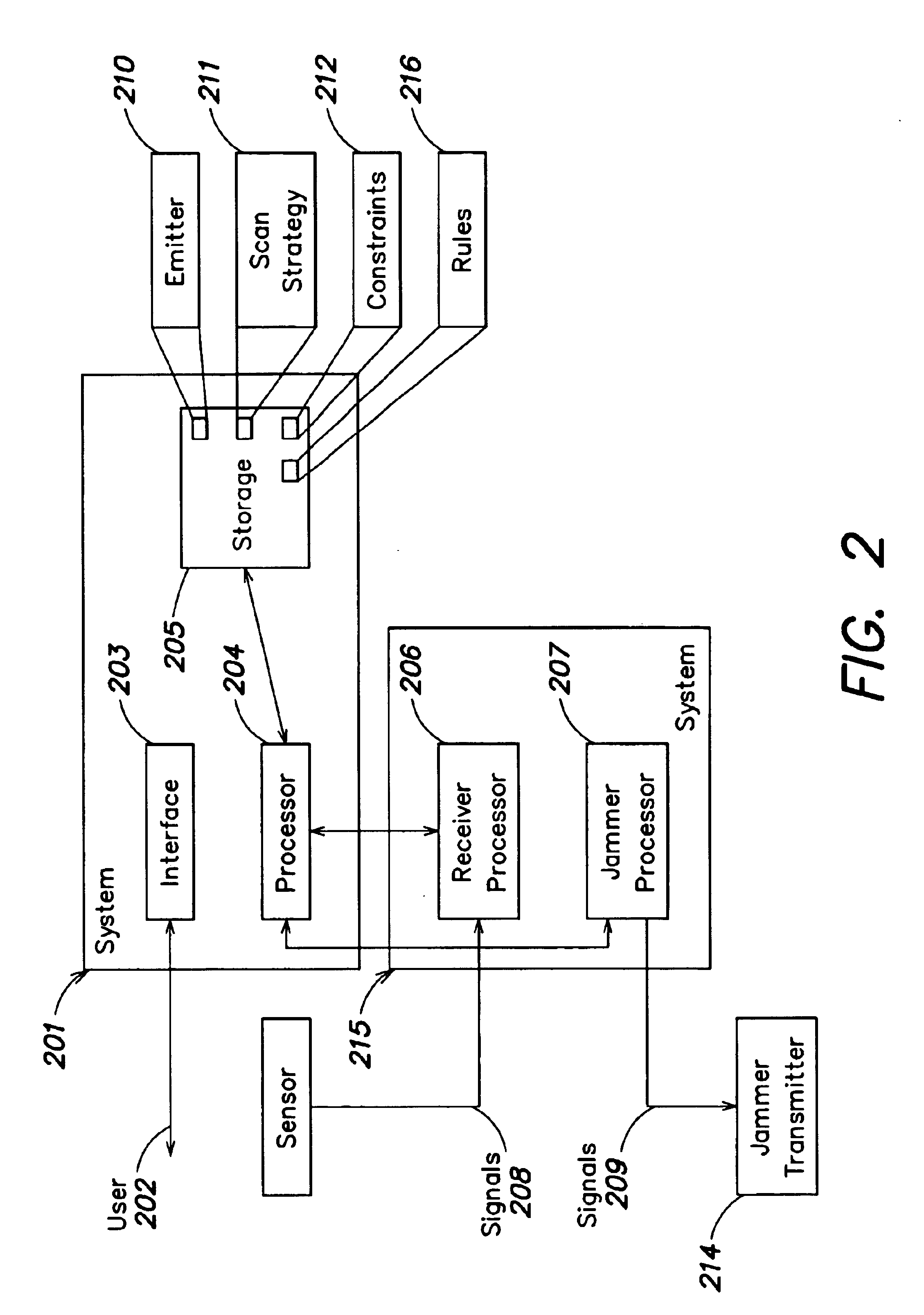System and method for tuning step coverage gap correction in a scan strategy
a scanning strategy and step coverage technology, applied in diversity/multi-antenna systems, instruments, reradiation, etc., can solve problems such as the inability of receivers to observe all threats at all frequencies simultaneously, the number of resources, and the inability to detect all threats at the same tim
- Summary
- Abstract
- Description
- Claims
- Application Information
AI Technical Summary
Benefits of technology
Problems solved by technology
Method used
Image
Examples
examples
The POP Boolean control is either on or off, so conflicts are handled by sorting dwells around the conflict, or if that is not possible, flagging the conflict.
This is illustrated by the following example:
Emitter #1 Frequency range: 1500-2000 MHz, POP On (normal case). Emitter #2 Frequency range: 2050-2550 MHz. POP Off (for some receivers, this is required for AM pulses, since the assumption of “square” pulses is not true, and may cause multiple encoding if POP is left enabled).
Assume a detecting bandwidth of 1000 MHz and 250 MHz. Any solution that attempts to include the emitters in the same dwell will cause a conflict to be detected. Such solutions are not favored by the dwell placement methods described below, which should find at least two 1000 MHz dwells at bandwidths 1000-2000 and 2050-3050. These two dwells avoid the conflict. If there is no gap between the dwells, or if additional conflict exists, then the 1000 MHz dwell may not be allowed.
For instance, expanding on the previ...
PUM
 Login to View More
Login to View More Abstract
Description
Claims
Application Information
 Login to View More
Login to View More - R&D
- Intellectual Property
- Life Sciences
- Materials
- Tech Scout
- Unparalleled Data Quality
- Higher Quality Content
- 60% Fewer Hallucinations
Browse by: Latest US Patents, China's latest patents, Technical Efficacy Thesaurus, Application Domain, Technology Topic, Popular Technical Reports.
© 2025 PatSnap. All rights reserved.Legal|Privacy policy|Modern Slavery Act Transparency Statement|Sitemap|About US| Contact US: help@patsnap.com



